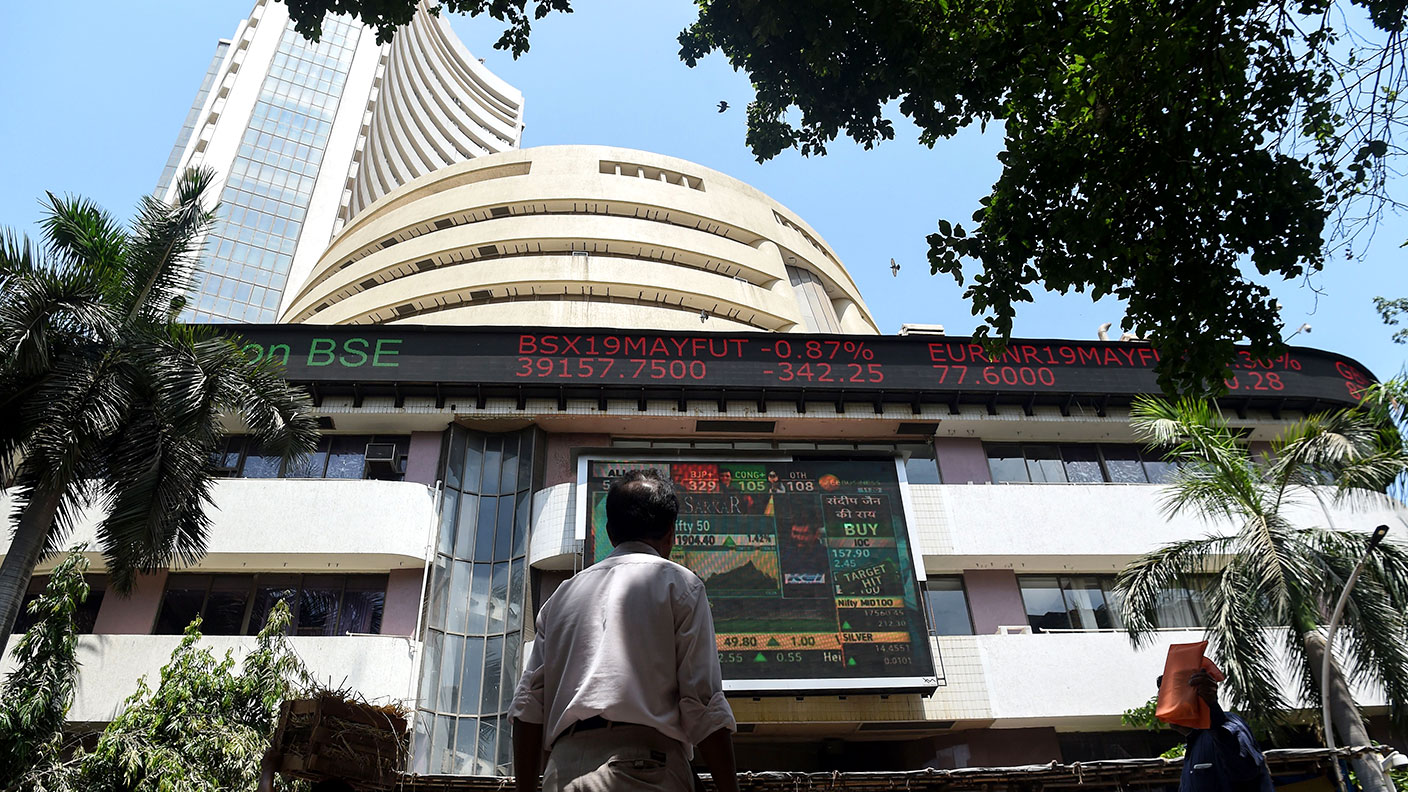Forget China, here’s why you should invest in India
As China becomes increasingly hostile to investors, India, with a young, educated, tech-savvy population and a reform-minded government, is becoming an emerging-market favourite. Merryn Somerset Webb picks the best ways to invest.


UK savers put £31.3bn into their pensions in the year to April 2020, according to numbers released recently. That was up from £27.9bn the year before, says HM Revenue & Customs.
Some 9.4 million people contributed to their personal pensions – with an average annual contribution of around £3,300. Add up all the tax reliefs this comes with, and the net cost to state coffers was over £22bn. That last number is key – it doesn’t just represent the immediate income tax relief you get when you contribute but the capital gains tax and the dividend taxes you never have to pay when your money is protected in a pension.
In other good news, the majority of the new cash is coming via our excellent auto enrolment programme – and 65% of the contributions are paid by employers (so most people are effectively being paid rather more than they think they are).
MoneyWeek
Subscribe to MoneyWeek today and get your first six magazine issues absolutely FREE

Sign up to Money Morning
Don't miss the latest investment and personal finances news, market analysis, plus money-saving tips with our free twice-daily newsletter
Don't miss the latest investment and personal finances news, market analysis, plus money-saving tips with our free twice-daily newsletter
It all adds up to real money – money sitting in real people’s pension accounts looking for a home. The problem – and the increasingly obvious one – is that with most markets looking expensive and inflation building, good homes are hard to find.
One way to look at this – possibly the only way – is to think as long term as you can. With valuation risk and interest rate risk (central banks might find that the effect of supply crunches on prices mean they have no choice but to raise rates) overhanging everything we must assume there will be a nasty correction (possibly a crash) at some point fairly soon and we must just buy the investments that we think will be the least bothered by such disruption in ten years’ time.
One thing to look at in this context is how a market is priced – the UK stockmarket remains far too cheap (I know you are bored with me telling you that). Another is the extent to which its internal dynamics and growth might make any fuss over short-term valuations look silly in a decade – in the way that those of us who fussed over the price of the likes of Google and Amazon a decade ago now look very silly indeed.
There are lots of reasons to be keen on India
And so to India. Only a few months ago the news from India seemed utterly appalling, with stories of uncontrolled Covid infections and overflowing hospitals. But, after hitting a nasty peak in early May, cases have fallen fast and the vaccination programme has stepped up a pace (the working population should all be done by early next year).
And as for the stockmarket, the Sensex index of top Indian shares has more than doubled since last year’s March lows; it is up 22% in the year to date and hit 60,000 for the first time last week.
There is a lot going on here. The first thing to say is that all the long-term structural reasons to be keen on the Indian market – the ones you already know about – remain in place. It has a fast- growing and increasingly affluent middle class (around 50 million people today and heading for well over 400 million); a very young and educated population (you can’t say both those things about many countries); and wages that are low relative to those in much of the rest of the emerging world – one-third of China’s for example.
India also has a reform-minded government – the country now regularly ranks among the top ten improvers in the World Bank’s “Ease of Doing Business” rankings. In the shorter term, there is, says Chris Wood of US investment bank Jefferies, “growing evidence of a new residential property cycle” under way after a seven-year downturn: affordability remains at historically attractive levels and sales have been rising.
The Julius Baer Global Lifestyle Report puts Mumbai at number 22 in its index of liveable cities calling it a “dynamic and diverse financial hub” where residential property costs half the global average and “the only truly expensive items are cars”.
India’s unicorns are coming
However, there are two new things to watch in India. The first is its technological revolution. India’s open-minded young tend to be early adopters, says India Capital Growth’s David Cornell and the rollout of the world’s largest 4G network combined with lockdowns, low-cost data and widespread smartphone usage (1.1 billion users) has massively accelerated the advent of ecommerce and digital banking. In India, 99% of all online activity happens on phones.
This transformation is not yet reflected in the stockmarket: the digital and technology sector makes up only 1% of market capitalisation versus 30% in the US. That is about to change. There is, says Mick Gilligan of Killik & Co, a “wave of IPOs coming down the tracks”. In other words, the unicorns are coming.
The second change in India, partly accelerated by the pandemic, is a growing realisation that the country is not China. The past few years have alerted multinationals to their overdependence on Chinese manufacturing in a time of political tension. They need to diversify, and where better for this than cheap English-speaking India, with its well-established chemical, electrical and pharmaceutical manufacturing base?
Investors might have the same sort of feeling: in the wake of a spate of anti-market regulatory crackdowns in China, they appear to fancy moving some of their emerging markets exposure too – and where better than fast-growing digital-savvy and investor-friendly India?
None of this comes cheap: the average price/earnings ratio across the Sensex is just over 30 times. But with earnings at what Wood calls an “inflection point” on the upside and a possible tech boom to come, that number should look rather better soon – and perhaps be a distant memory when you come to draw your pension.
How to invest in india
There are a few good investment trusts in the area. You might start with the Baillie Gifford-managed Pacific Horizon Investment Trust (LSE: PHI). It is not just India-focused but there is surely a message in the fact that it has invested in three new Indian companies pre-IPO (10% of the firm’s assets can currently be invested in private companies) in the last financial year to July and in the rise in the share of the portfolio held in India from 7% to 29% in the same year, while Chinese exposure fell from 41% to 27%. Long-term manager Ewan Markson-Brown has recently stepped down (you can find him at Crux Asset Management where he will be launching a similar fund but inside a smaller management firm) but the portfolio has been left in good shape.
Another option is the India Capital Growth Fund (LSE: ICG) which invests in mid- and small-cap companies only. Performance has been good recently and you can buy it on an 8% discount to its net asset value. This seems like good value: the board has arranged for investors who want to redeem their holdings to do so at a discount of 6% at the end of the year).
Finally, there is the Ashoka India Equity Investment Trust (LSE: AIE) which again focuses on mid-sized and smaller companies. It has a performance fee (I don’t like these) but it is definitely earning it – the shares are up 34% this year alone.
• This article was first published in the Financial Times
Get the latest financial news, insights and expert analysis from our award-winning MoneyWeek team, to help you understand what really matters when it comes to your finances.
Merryn Somerset Webb started her career in Tokyo at public broadcaster NHK before becoming a Japanese equity broker at what was then Warburgs. She went on to work at SBC and UBS without moving from her desk in Kamiyacho (it was the age of mergers).
After five years in Japan she returned to work in the UK at Paribas. This soon became BNP Paribas. Again, no desk move was required. On leaving the City, Merryn helped The Week magazine with its City pages before becoming the launch editor of MoneyWeek in 2000 and taking on columns first in the Sunday Times and then in 2009 in the Financial Times
Twenty years on, MoneyWeek is the best-selling financial magazine in the UK. Merryn was its Editor in Chief until 2022. She is now a senior columnist at Bloomberg and host of the Merryn Talks Money podcast - but still writes for Moneyweek monthly.
Merryn is also is a non executive director of two investment trusts – BlackRock Throgmorton, and the Murray Income Investment Trust.
-
 Goodwin: A superlative British manufacturer to buy now
Goodwin: A superlative British manufacturer to buy nowVeteran engineering group Goodwin has created a new profit engine. But following its tremendous run, can investors still afford the shares?
-
 Is US stock market exceptionalism over?
Is US stock market exceptionalism over?US stocks trailed the rest of the world in 2025. Is this a sign that a long-overdue shift is underway?
-
 Modi’s reforms set Indian stocks on fire
Modi’s reforms set Indian stocks on fireIndian stocks pass a new milestone, but global fund managers are holding back. Are there signs of overheating?
-
 Halifax: House price slump continues as prices slide for the sixth consecutive month
Halifax: House price slump continues as prices slide for the sixth consecutive monthUK house prices fell again in September as buyers returned, but the slowdown was not as fast as anticipated, latest Halifax data shows. Where are house prices falling the most?
-
 Rents hit a record high - but is the opportunity for buy-to-let investors still strong?
Rents hit a record high - but is the opportunity for buy-to-let investors still strong?UK rent prices have hit a record high with the average hitting over £1,200 a month says Rightmove. Are there still opportunities in buy-to-let?
-
 Pension savers turn to gold investments
Pension savers turn to gold investmentsInvestors are racing to buy gold to protect their pensions from a stock market correction and high inflation, experts say
-
 Where to find the best returns from student accommodation
Where to find the best returns from student accommodationStudent accommodation can be a lucrative investment if you know where to look.
-
 The world’s best bargain stocks
The world’s best bargain stocksSearching for bargain stocks with Alec Cutler of the Orbis Global Balanced Fund, who tells Andrew Van Sickle which sectors are being overlooked.
-
 Revealed: the cheapest cities to own a home in Britain
Revealed: the cheapest cities to own a home in BritainNew research reveals the cheapest cities to own a home, taking account of mortgage payments, utility bills and council tax
-
 UK recession: How to protect your portfolio
UK recession: How to protect your portfolioAs the UK recession is confirmed, we look at ways to protect your wealth.
